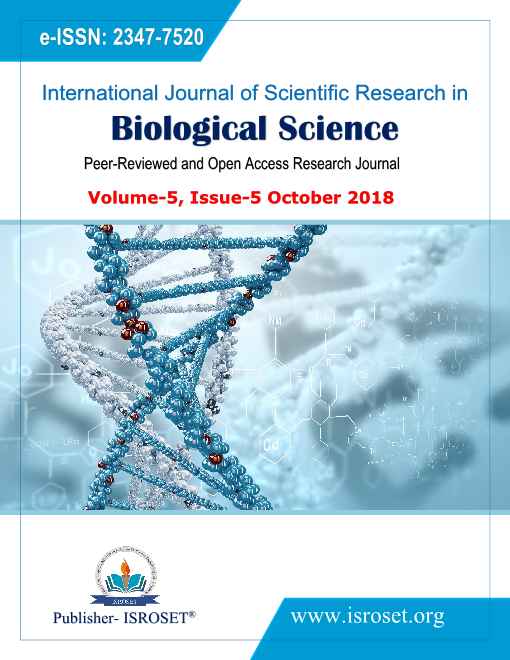Management of Soil Fertility for Sustaining Quality Mulberry Leaf Production in North India
Keywords:
micronutrients, mulberry, nutrients, organic farming, soil healthAbstract
The silk industry in Jammu and Kashmir (J&K) state is of very ancient origin. Due to natural irrigation system and highly salubrious climatic conditions is very suitable for bivoltine sericulture. Soil fertility is only one of a number of factors that determine the magnitude of crop yield. Low fertility results in decreased crop development and yield. The fertility of the soil can be managed by fertilization or by application of appropriate management approach. Plants sequester nutrients from atmosphere via photosynthesis and absorption by roots from soil, proportion of which in turn is taken up by animals and returned back to soil. The soil microbial biomass is the living portion of organic content in soil, maintenance of which facilitates retention of soil organic pool and nutrient availability. Increasing organic carbon in soil improves soil health, reduces soil erosion and degradation, improves surface water quality, and increases soil productivity. Indiscriminate use of inorganic fertilizers may have deteriorated the soil characteristics and its micro-flora. In view of above reasons, the output yields of mulberry are low in the traditional sericulture zones. Application of green technologies will pave way for sustenance of soil fertility and quality leaf production.
References
Dandin, S. B., J. Jayaswal and K. Giridhar, 2003 “Hand Book of Sericulture Technologies” Central Silk Board, Bangalore, India.
Ahsan MM, Dhar A, Dhar KL and Fotadar RK, (1990). Package of practices for mulberry cultivation under temperate conditions. Indian Silk, 29(2): 7-12.
Dhar A and Khan MA, 2004. Package of Practices for mulberry tree cultivation. Asian Textile Journal, 13(5): 62-66.
Pan YL, 2003. Popularization of good mulberry varieties and sericultural development. Acta Sericol. Sin.1:1-6.
L. S. Durge, A. A. Dhammani, R. N. Chavhan,(2018). Physico-Chemical Characteristics of a Fresh Water Pond of Ghugus,District Chandrapur, Maharashtra (India), International Journal of Scientific Research in Biological Sciences,Vol.5(3),59-64.
Bates,T.E., 1971. Factors affecting critical nutrient concentrations in plants and their evaluation. Soil Sci., 112: 116-126.
Kerenhap, W., V. Thiagarajan and V. Kumar, 2007. Biochemical and bioassay studies on the influence of different organic manures on the growth of Mulberry Variety V1 and silkworm, Bombyx mori Linn. Caspian J. Env. Sci., 5(1): 51-56.
Shashidhar, K.R., Narayanaswamy, T. K., Bhaskar, R. N., Jagdish, B.R., M. Mahesh and K.S. Krishna, 2009. Influence of organic based nutrients on soil health and mulberry (Morus indica L.) production. e. J. Biol. Sci.,1(1): 94-100.
Aroca, R., Porcel, R., Ruiz-Lozano, J.M. 2007. How does arbuscular mycorrhizal symbiosis regulate root hydraulic properties and plasma membrane aquaporins in Phaseolus vulgaris underdrought, cold or salinity stresses? New Phytologist 173:808-816.
Bagyaraj, D. J. and A. Manjunath, 1980. Response of crop plants to VA mycorrhizal inoculation in an unsterile Indian soil. New Phytol., 85(1): 33-36.
Faber, B.A., R. J. Zasosk, R.G. Burau and Uriuk, 1990. Zinc uptake by corn as affected by vesicular arbuscular mycorrhizae. Plant Soil, 129(1): 121-123.
G.K.Rohela, Y.Srinivasulu and M.S. Rathore (2017).A Review Paper on Recent Trends in Bio-Nanotechnology: Implications and Potentials, Nanoscience & Nanotechnology-Asia, DOI: 10.2174/2210681208666171204163015.
Tikader A and Dandin S, 2005. Biodiversity, Geographical distribution, Utilization and Conservation of wild mulberry Morus serrata Roxb. Caspian J. Environ. Sci., 3:177-184.
Ford-Lloyd BV, 1990. The conservation of horticultural plants genetic resources. In: 23rd international Horticultural Congress. Plenary Lectures, Firenze, Italy, pp.31-38.
Rathore, M.S., Srinivasulu, Y., Shabnam, A.A., Anil Dhar and M.A. Khan, 2010. Nutrient Deficency symptoms in mulberry and its management. Bulletin-17, Central Sericultural Research and Training Institute, Central Silk Board, Pampore, Kashmir.
Rebecca E. Hirch and Michael R. Sussman Improving nutrient capture from soil by the genetic manipulation of crop plants. Trends in Biotechnology Vol.17 1999
Sarkar A, 2000. Improvement in mulberry-current status and future strategies, Lead paper, Natl. Conf.Stra. Seric. Research, Central Sericultural Research and Training Institute, Mysore, India, pp.1-11.
Rathore MS, Srinivasulu Y, Kour R, Anil Dhar and Khan MA, 2010. Cryopreservation of elite mulberry germplasm. Curr. Sci., 99(5): 557.
Amanjot Kaur (2018).Conservation of Plant Biodiversity: Current Strategies and Future Needs, International Journal of Scientific Research in Biological Sciences, 5(4):109-113.
Downloads
Published
How to Cite
Issue
Section
License

This work is licensed under a Creative Commons Attribution 4.0 International License.
Authors contributing to this journal agree to publish their articles under the Creative Commons Attribution 4.0 International License, allowing third parties to share their work (copy, distribute, transmit) and to adapt it, under the condition that the authors are given credit and that in the event of reuse or distribution, the terms of this license are made clear.







